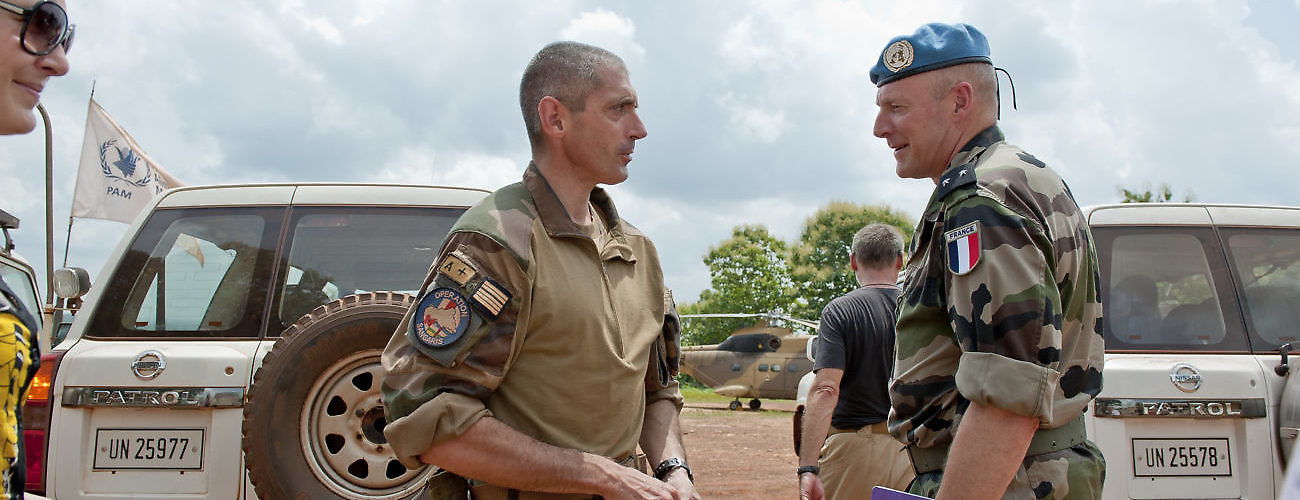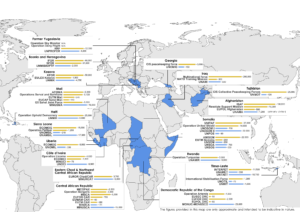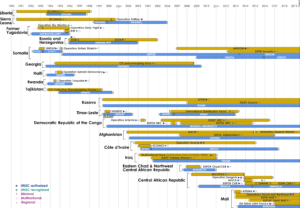Brigadier General Frédéric Hingray (right), force chief of staff for the UN Multidimensional Integrated Stabilization Mission in the Central African Republic (MINUSCA), speaks to a colonel of the French Operation Sangaris in Bangui, June 20, 2014. UN Photo/Catianne Tijerina. UN Photo/Catianne Tijerina
Since the end of the Cold War, the UN Security Council has authorized or recognized the deployment of more than forty parallel forces that operate alongside UN peace operations. As the Security Council has deployed peace operations in increasingly non-permissive environments, the division of labor between UN missions and these parallel forces has blurred, and their goals have sometimes come into conflict. This raises the question of whether they are partners or competitors.
This report examines the missions that have operated in parallel to UN peace operations to identify how to strengthen these partnerships in the future. It analyzes and categorizes the types of parallel forces that have been deployed and examines the rationales for deploying them. It also looks at strategic and operational challenges, including the challenges unique to peace operations operating alongside a counterterrorism force. Finally, drawing on lessons from past and current parallel deployments, it offers recommendations for member states, the Security Council, and the UN Secretariat. These include:
- Strengthening coordination of assessments, planning, and application of UN standards: The UN and actors deploying parallel forces should conduct joint assessments and planning when deploying or reconfiguring missions. The UN Security Council should also engage more regularly with parallel forces and encourage the continued development of human rights compliance frameworks for them.
- Clarifying roles, responsibilities, and areas of operation: Peace operations and parallel forces should clearly delineate their responsibilities and areas of operation, assess the risks of collocating, and improve strategic communications with the local population. The Security Council should also continue to put in place mechanisms to strengthen the accountability of parallel forces, especially when peace operations are providing support that could contribute to counterterrorism operations.










